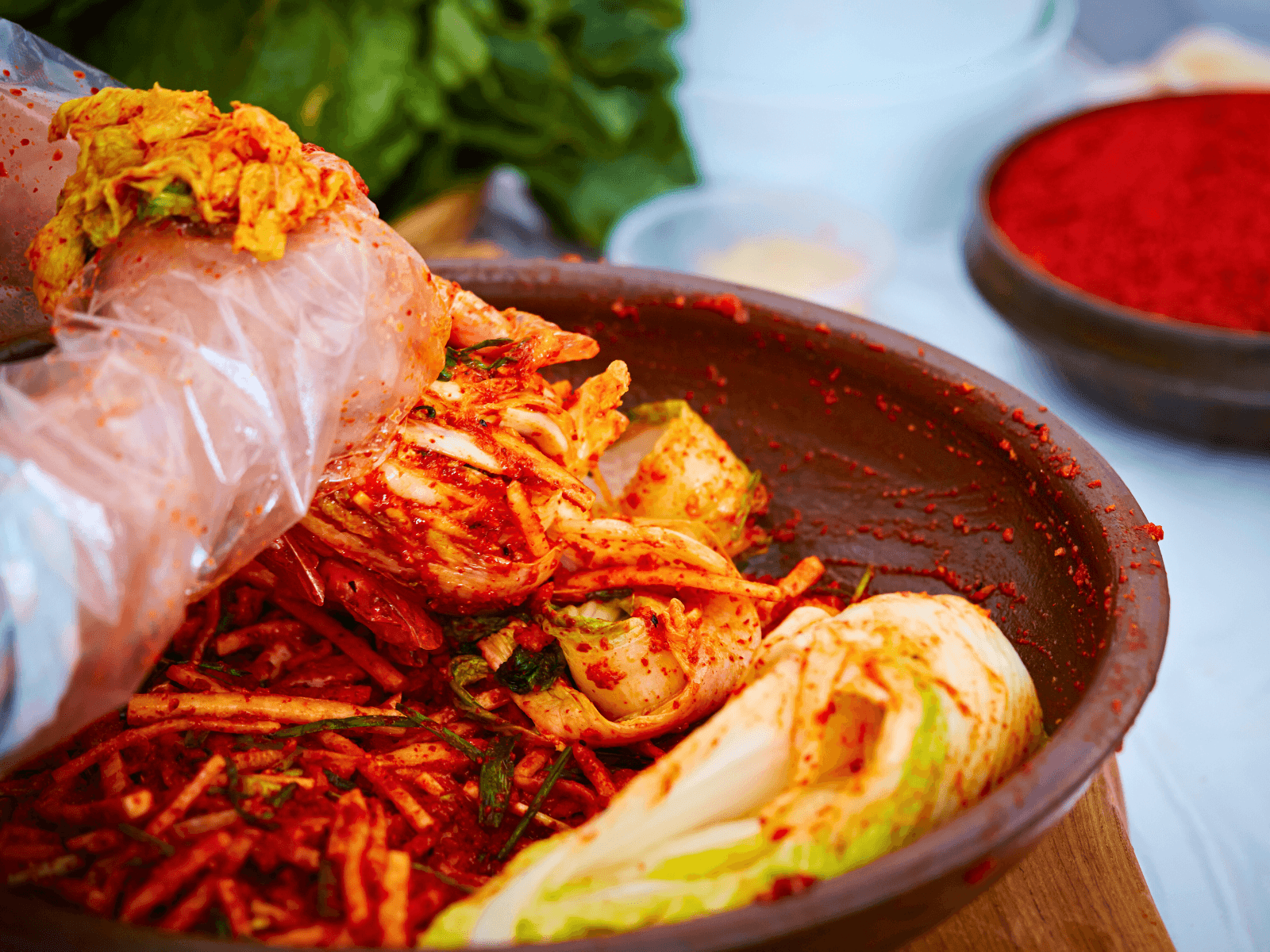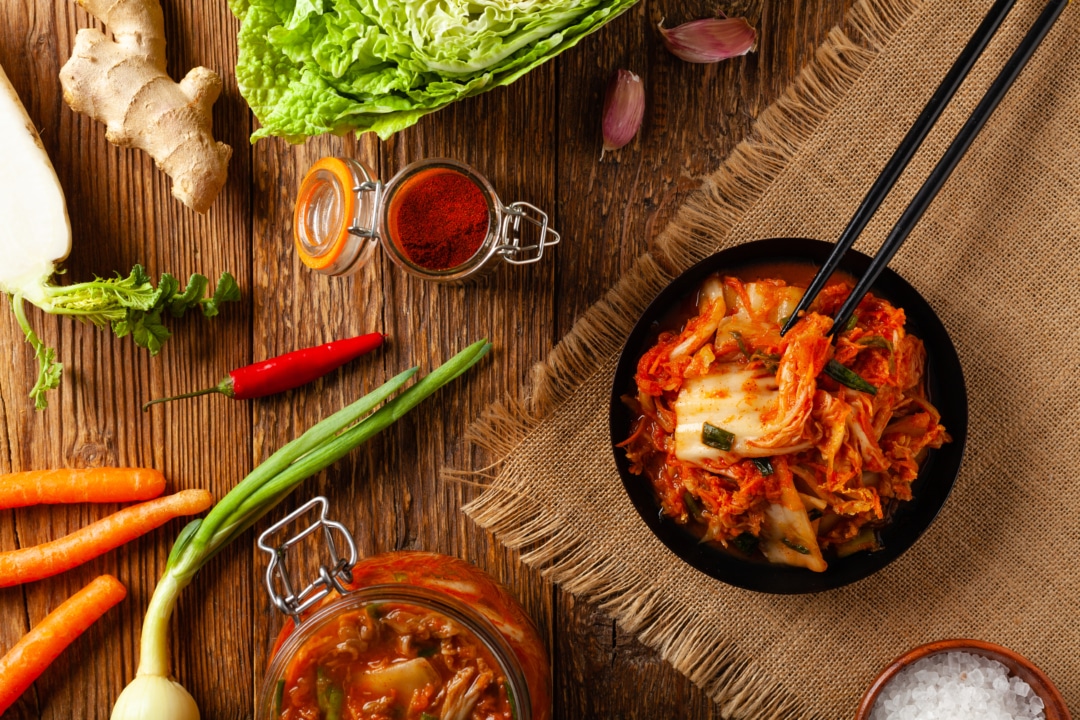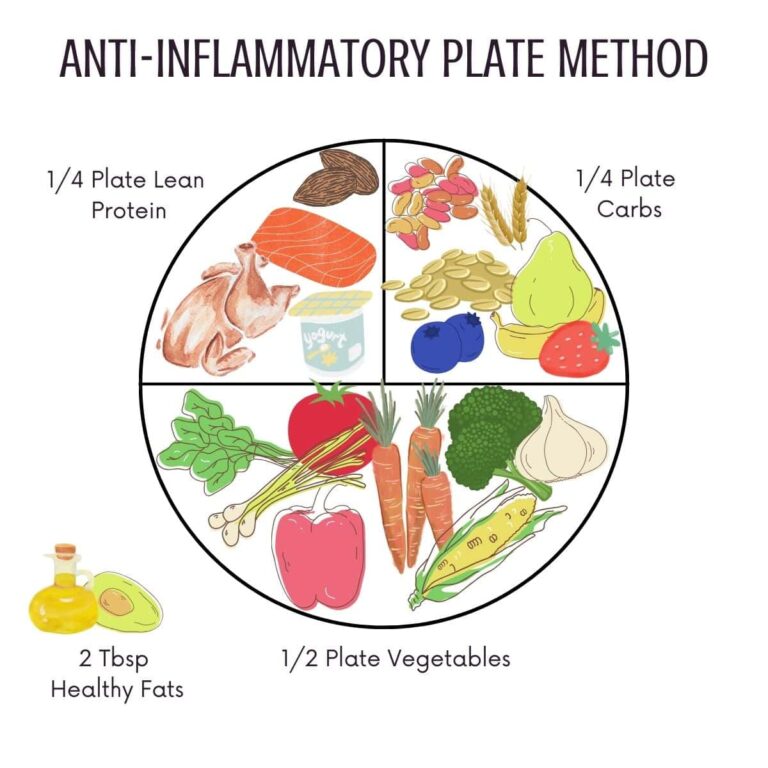More Than Just Spice: Unpacking the Health Benefits of Kimchi
In the vast tapestry of global cuisines, few dishes capture the imagination, stimulate the palate, and nourish the body with the multifaceted intensity of kimchi. Far from being a mere condiment or a spicy side dish, this iconic Korean staple is a living testament to ancient wisdom, a culinary tradition that has evolved over millennia, and a potent symbol of food as medicine. Its recent ascent to global superfood status is not a fleeting trend but a recognition of its profound and scientifically validated health benefits. For the discerning palate and the inquisitive mind, kimchi offers a story, a journey from humble ingredients to a microbiologically rich, nutrient-dense powerhouse that impacts everything from gut health to cognitive function.
To truly appreciate kimchi’s health narrative, we must first understand its essence: a symphony of fermentation. This is where the magic begins, transforming simple vegetables into a complex, bioactive matrix.
The Alchemy of Fermentation: A Microbiological Masterpiece
At its core, kimchi is a fermented food, and it is this transformative process that unlocks its unparalleled health potential. The journey starts with key ingredients – most notably napa cabbage, often complemented by radish, scallions, garlic, ginger, and a vibrant paste of gochugaru (Korean chili flakes), fish sauce, and other seasonings. While these ingredients individually boast an impressive nutritional profile, fermentation elevates them to an entirely new echelon.
The process is initiated by naturally occurring lactic acid bacteria (LAB) present on the surface of the vegetables. As these bacteria proliferate in an anaerobic environment (typically created by packing the kimchi tightly), they metabolize the sugars in the vegetables, producing lactic acid, acetic acid, and other organic acids. This acidification is crucial for several reasons: it preserves the food by inhibiting the growth of spoilage organisms and harmful pathogens, it develops the characteristic tangy flavor of kimchi, and most importantly, it creates a rich ecosystem of beneficial microorganisms.
The dominant LAB species found in kimchi include various strains of Lactobacillus (e.g., L. plantarum, L. brevis, L. casei), Leuconostoc (e.g., L. mesenteroides), and Weissella species. These are the unsung heroes of kimchi, transforming it into a potent probiotic delivery system. Probiotics, by definition, are live microorganisms that, when administered in adequate amounts, confer a health benefit on the host. Kimchi, particularly when unpasteurized, is brimming with these beneficial bacteria, making it a natural and effective way to populate the gut with diverse and robust microbial communities.
Beyond merely introducing new bacteria, fermentation also enhances the bioavailability of nutrients. The enzymatic activity during fermentation breaks down complex compounds into simpler, more easily digestible forms. For instance, some LAB strains produce enzymes that can degrade phytates, anti-nutrients found in plant foods that can inhibit mineral absorption. This means that minerals like iron, zinc, and calcium, as well as vitamins present in the raw ingredients, become more accessible to the body once fermented. Furthermore, some bacteria can synthesize new vitamins, particularly B vitamins like folate and riboflavin, adding another layer of nutritional enrichment.
The fiber content of the vegetables also plays a critical role, acting as a prebiotic. Prebiotics are non-digestible food components that selectively stimulate the growth and activity of beneficial bacteria in the colon. Thus, kimchi functions as a synbiotic food, containing both live beneficial bacteria (probiotics) and the fuel (prebiotics) to help them thrive, fostering a synergistic environment for optimal gut health. This intricate microbiological dance lays the foundation for kimchi’s profound systemic impacts, starting, as almost all good health stories do, in the gut.
The Gut-Brain Axis: Kimchi’s Influence on Mental Well-being
The burgeoning field of the gut-brain axis (GBA) has revolutionized our understanding of health, revealing a bidirectional communication pathway between the enteric nervous system (ENS) in the gut and the central nervous system (CNS) in the brain. The gut microbiome, the trillions of microorganisms residing in our intestines, plays a pivotal role in mediating this communication. A balanced, diverse, and robust gut microbiome is increasingly recognized as fundamental not only for digestive health but also for cognitive function, mood regulation, and stress resilience. This is where kimchi steps into the spotlight.
The probiotics in kimchi contribute to a healthy gut microbiome, which in turn influences the GBA through several mechanisms. Firstly, gut bacteria produce a myriad of neuroactive compounds, including neurotransmitters like serotonin, gamma-aminobutyric acid (GABA), and dopamine precursors. While these are primarily synthesized for local gut function, their presence and influence can have systemic effects. For instance, up to 90% of the body’s serotonin, a key neurotransmitter involved in mood regulation, is produced in the gut. A healthy microbiome can modulate the availability of tryptophan, the amino acid precursor to serotonin, thereby indirectly influencing its production.
Secondly, beneficial gut bacteria ferment dietary fibers (prebiotics) to produce short-chain fatty acids (SCFAs) such as butyrate, propionate, and acetate. These SCFAs are not just fuel for colonocytes; they are powerful signaling molecules. Butyrate, in particular, has been shown to cross the blood-brain barrier and exert neuroprotective and anti-inflammatory effects. It can modulate gene expression, influence neurotransmitter pathways, and contribute to the integrity of the intestinal barrier, preventing "leaky gut" which can contribute to systemic inflammation that impacts the brain.
Chronic inflammation, even low-grade systemic inflammation, is increasingly linked to various mental health disorders, including depression and anxiety. By promoting a healthy gut environment and reducing dysbiosis (an imbalance in gut flora), kimchi’s probiotics can help dampen systemic inflammation. A healthy gut lining acts as a barrier, preventing bacterial components and toxins from entering the bloodstream and triggering inflammatory responses throughout the body, including the brain.
Research, though still in its early stages for kimchi specifically, has shown that probiotic interventions can improve symptoms of anxiety, depression, and stress. The Lactobacillus species abundant in kimchi have been implicated in these effects, potentially by influencing the hypothalamic-pituitary-adrenal (HPA) axis, the body’s central stress response system. By modulating the stress response and reducing circulating stress hormones like cortisol, kimchi may indirectly contribute to enhanced mental resilience and a more balanced mood. The narrative of kimchi, therefore, extends beyond mere physical nourishment, delving into the intricate landscape of our emotional and cognitive well-being.
A Shield Against Illness: Kimchi and Immune Modulation
The saying "all disease begins in the gut" holds more truth than ever in light of modern scientific understanding. A significant portion of our immune system, approximately 70-80%, resides in the gut-associated lymphoid tissue (GALT). This intricate network constantly interacts with the gut microbiome, making the health of our intestines paramount to our overall immune defense. Kimchi, with its rich probiotic profile and potent array of bioactive compounds, acts as a formidable ally in strengthening and modulating this complex immune system.
The live bacteria in kimchi communicate directly with immune cells in the gut lining. They can enhance the production of immunoglobulin A (IgA), an antibody crucial for mucosal immunity, which acts as a first line of defense against pathogens at mucosal surfaces like the gut, respiratory tract, and urogenital tract. By boosting IgA levels, kimchi contributes to a more robust barrier against invading microbes. Furthermore, probiotics can modulate cytokine profiles – the signaling molecules that orchestrate immune responses. They can help shift the balance towards anti-inflammatory cytokines, reducing chronic low-grade inflammation, while simultaneously enhancing the body’s ability to mount an effective response against acute infections.
Beyond the probiotic action, the diverse ingredients of kimchi contribute their own immune-boosting properties. Garlic, a foundational component, is renowned for its sulfur-containing compounds, particularly allicin, which possesses potent antimicrobial, antiviral, and antifungal activities. Ginger, another common ingredient, contains gingerols and shogaols, known for their anti-inflammatory and immunomodulatory effects. Red pepper flakes (gochugaru) bring capsaicin, which not only gives kimchi its characteristic heat but also exhibits antioxidant and anti-inflammatory properties, potentially influencing immune cell function.
The glucosinolates present in napa cabbage and other cruciferous vegetables are precursors to compounds like sulforaphane and indole-3-carbinol. These compounds are powerful detoxifiers and immune modulators, capable of activating phase II detoxification enzymes in the liver, which help neutralize harmful toxins and carcinogens. By supporting the body’s natural detoxification pathways, kimchi indirectly reduces the burden on the immune system and protects cells from damage.
Regular consumption of fermented foods like kimchi has been associated with a reduced incidence of common infections, such as colds and flu. This is attributed to the sustained positive influence on the gut microbiome and the subsequent enhancement of systemic immunity. For individuals dealing with allergies or even autoimmune conditions, the immune-regulatory potential of kimchi offers a compelling area of exploration. By fostering a balanced immune response, kimchi doesn’t just fight off illness; it helps the body learn to react appropriately to internal and external stimuli, preventing both under- and over-reactions that characterize various immune dysfunctions. It’s not merely a shield, but a sophisticated system enhancer.
Beyond the Gut: Systemic Health Benefits
Kimchi’s influence radiates far beyond the confines of the gut, extending its benevolent reach to virtually every system in the body. Its rich tapestry of nutrients, bioactive compounds, and microbial metabolites contribute to a holistic spectrum of systemic health benefits.
Cardiovascular Health
The heart, the tireless engine of our body, benefits significantly from regular kimchi consumption. Several mechanisms are at play. Firstly, the fiber content, particularly from the cabbage, aids in reducing LDL ("bad") cholesterol by binding to bile acids in the digestive tract, promoting their excretion. The SCFAs produced by gut bacteria also play a role in cholesterol metabolism. Secondly, the presence of potassium in kimchi, alongside its low-fat profile, contributes to blood pressure regulation. Potassium helps counterbalance the effects of sodium, promoting vasodilation and reducing fluid retention.
Furthermore, kimchi is an antioxidant powerhouse. The vibrant red color of gochugaru signals the presence of carotenoids like beta-carotene, lutein, and zeaxanthin, while garlic, ginger, and cabbage contribute a wealth of polyphenols, flavonoids, and organosulfur compounds. These antioxidants combat oxidative stress, a key driver of cardiovascular disease, by neutralizing free radicals that damage blood vessel walls and contribute to atherosclerosis. The anti-inflammatory effects mediated by both the probiotics and phytochemicals also protect the delicate endothelial lining of blood vessels, fostering cardiovascular resilience.
Metabolic Health & Weight Management
For those navigating the complexities of metabolic health and weight management, kimchi offers several compelling advantages. The high fiber content promotes satiety, helping to reduce overall calorie intake and prevent overeating. Fiber also slows down glucose absorption, leading to a more stable blood sugar response and improved insulin sensitivity – a crucial factor in preventing and managing type 2 diabetes.
Capsaicin from the red pepper flakes contributes a thermogenic effect, slightly increasing metabolic rate and calorie expenditure. While not a magic bullet for weight loss, this subtle boost, combined with the other benefits, can be a supportive element. More profoundly, the gut microbiome plays a significant role in energy metabolism, nutrient extraction, and even fat storage. A balanced microbiome, fostered by kimchi’s probiotics and prebiotics, can positively influence metabolic pathways, reduce inflammation associated with metabolic syndrome, and potentially impact the body’s propensity to store fat. Some research suggests that specific probiotic strains found in kimchi can alter the gut microbiota in ways that favor a leaner phenotype.
Anti-inflammatory & Antioxidant Powerhouse: A Deeper Dive into Ingredients
The brilliance of kimchi lies not just in its fermentation but in the synergistic interplay of its individual components, each contributing a unique arsenal of beneficial compounds:
- Napa Cabbage (Baechu): The primary ingredient, napa cabbage, is a cruciferous vegetable rich in vitamins C and K, folate, and an array of powerful phytonutrients. Its most notable contribution is glucosinolates, which, upon chopping and fermentation, convert into potent anti-cancer compounds like sulforaphane and indole-3-carbinol. These compounds are celebrated for their ability to induce detoxification enzymes, inhibit carcinogen activation, and exert significant anti-inflammatory and antioxidant effects.
- Garlic (Maneul): A non-negotiable component, garlic is a medicinal marvel. It’s packed with organosulfur compounds, particularly allicin, which is responsible for its pungent aroma and most of its therapeutic properties. Allicin and its derivatives exhibit strong antimicrobial, antiviral, anti-inflammatory, and antioxidant activities. They also play a role in cardiovascular health by improving lipid profiles and supporting healthy blood pressure.
- Ginger (Saenggang): Known for its zesty flavor and warming properties, ginger contributes gingerols, shogaols, and paradols. These compounds are potent anti-inflammatory agents, making ginger an excellent ally against chronic inflammation. It also aids digestion, supports immune function, and has anti-nausea properties.
- Red Pepper Flakes (Gochugaru): This vibrant chili powder not only provides kimchi’s characteristic heat and color but also a wealth of health benefits. It’s rich in capsaicin, a compound extensively studied for its pain-relieving, anti-inflammatory, and metabolic-boosting effects. Gochugaru is also an excellent source of carotenoids (beta-carotene, lutein, zeaxanthin), powerful antioxidants that protect cells from oxidative damage and support vision health.
- Other Ingredients (Radish, Scallions, etc.): Depending on the recipe, other vegetables like Korean radish (mu), scallions (pa), and various herbs add additional layers of vitamins, minerals, fiber, and diverse phytochemicals, further enriching kimchi’s nutritional density and enhancing its synergistic health benefits.
The collective impact of these ingredients, amplified and transformed by fermentation, creates a food that is not merely nutritious but genuinely medicinal. The sheer volume and variety of antioxidants and anti-inflammatory compounds work in concert to neutralize free radicals, reduce systemic inflammation, and protect cells and tissues from damage, thereby laying the groundwork for robust long-term health and disease prevention.
Considerations and Nuances: Navigating the Kimchi Landscape
While kimchi is undeniably a health champion, a nuanced understanding of its consumption is beneficial for the knowledgeable audience. Like any powerful food, context and quality matter.
Sodium Content
One common concern associated with kimchi is its relatively high sodium content, primarily from the brining process of the cabbage and the addition of salt during seasoning. For individuals managing hypertension or on sodium-restricted diets, this is a valid consideration. However, it’s important to contextualize this. Firstly, kimchi is typically consumed in smaller portions as a side dish, not as a main course in large quantities. Secondly, the high potassium content of the vegetables helps to mitigate some of the negative effects of sodium, as potassium plays a crucial role in maintaining fluid balance and healthy blood pressure. Furthermore, the fermentation process itself can alter the chemical form of sodium and its physiological impact. Moderation and awareness of overall dietary sodium intake are key.
Variability and Quality
The world of kimchi is incredibly diverse. There are hundreds of varieties, differing in ingredients, spice levels, and fermentation times. The health benefits can vary depending on these factors.
- Homemade vs. Commercial: Homemade kimchi, or artisanal varieties, often contain a wider diversity of live bacteria and fewer artificial additives. Commercial kimchi can range from excellent quality to pasteurized versions that have lost their live probiotic cultures. Always check labels for "unpasteurized" or "contains live cultures" to ensure you’re getting the full probiotic benefit.
- Fermentation Stage: Young kimchi is milder and crunchier, while more mature kimchi has a deeper, tangier flavor and often a higher concentration of beneficial bacteria and organic acids. Both offer health benefits, but the microbial profile evolves over time.
Serving Size and Integration
Kimchi is best integrated into a balanced diet as a regular, moderate addition. A typical serving might be a quarter to half a cup. It can be eaten directly, added to soups (like Kimchi Jjigae), stews, stir-fries, or even as a topping for grains and proteins. For those new to fermented foods, starting with smaller portions allows the gut microbiome to adapt.
Individual Responses
While kimchi offers broad benefits, individual responses can vary. Some individuals, particularly those with a highly compromised gut or specific sensitivities (e.g., histamine intolerance, though less common with kimchi than some other fermented foods), might experience initial digestive adjustments. It’s always wise to listen to your body and adjust consumption accordingly. Kimchi is a valuable component of a healthy lifestyle, not a standalone panacea.
Conclusion: A Timeless Tradition, a Modern Marvel
Kimchi is more than just a culinary delight; it is a profound cultural artifact and a potent functional food. Its journey from simple vegetables, through the transformative alchemy of fermentation, culminates in a complex matrix of probiotics, prebiotics, vitamins, minerals, and an astonishing array of bioactive phytochemicals. This ancient Korean staple, once confined to regional tables, has emerged onto the global stage as a recognized superfood, backed by a growing body of scientific evidence.
From bolstering the immune system and nurturing a vibrant gut microbiome to influencing mood, protecting cardiovascular health, and supporting metabolic balance, kimchi’s benefits are multifaceted and deeply interconnected. It embodies the essence of food as medicine, a testament to the wisdom embedded in traditional foodways that instinctively understood the power of microbial life and botanical synergy.
As we continue to unravel the intricate connections between diet, microbiome, and human health, kimchi stands as a shining example of how a timeless tradition can offer profound solutions to modern health challenges. It invites us to savor not just its unique, fiery tang, but also the rich narrative of health, heritage, and the living organisms that make every bite a step towards greater well-being. For the knowledgeable connoisseur, kimchi is not just spice; it is life, fermented and fully realized.







